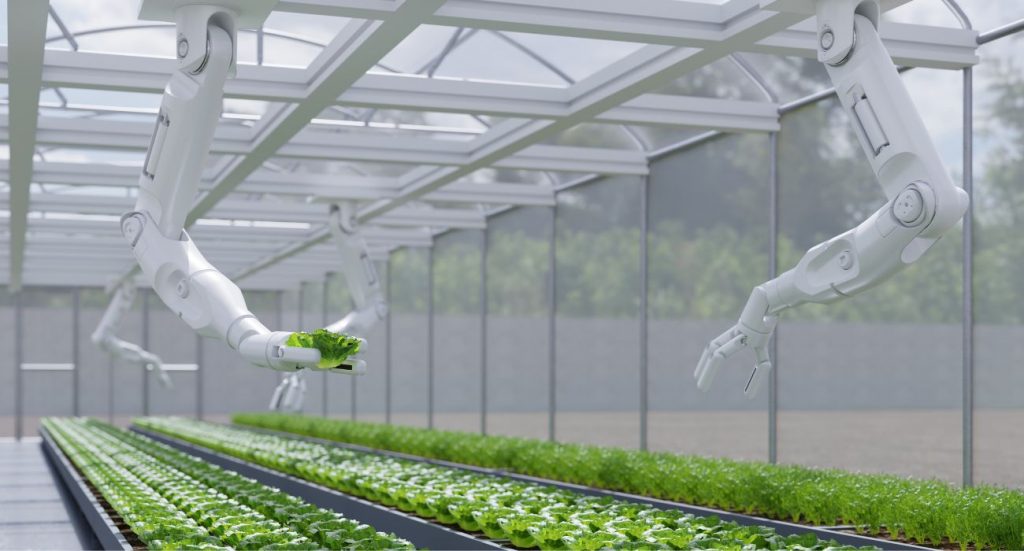
We live in a world teeming with complex challenges that grow exponentially by the day. Swelling populations clamor for sustenance, requiring more agricultural output. Yet, freshwater resources are disappearing at an alarming rate. Throwing us into a precarious balance. Add to this cocktail the unpredictable whims of climate change which make droughts more frequent and devastating. This conundrum necessitates new methods to stretch our limited water reserves to the max in the agriculture sector.
Into this fray leaps Artificial Intelligence like a hero from a sci-fi saga. No longer confined to the realms of robotics or internet algorithms, AI brings its computational muscle to the ancient art of irrigation. It aims to rewrite the rulebook on how we manage this crucial resource. If water is the lifeblood of agriculture AI emerges as the beating heart pumping with precision to nourish every crop and save every drop. With technology wielding such potential we stand on the brink of a transformative era in irrigation management. So, let’s delve into how AI promises to rewrite our future with each calculated sprinkle and targeted squirt.
Traditional Approach to Irrigation Management
Traditional irrigation methods have deep historical roots. Harking back to ancient times when societies depended on simple techniques like ditches, canals and good old-fashioned sweat and toil. While these methods have served humanity for centuries they come replete with conspicuous disadvantages. For example they’re not particularly frugal with water. Over-irrigation occurs frequently a rather wasteful practice that depletes precious water resources. There’s also a noticeable lack of precision causing indiscriminate water distribution that can lead to both soil erosion and wastage.
Heavily reliant on human intervention traditional systems offer scant room for real-time adjustments. In this context the scope for data-driven decisions narrows significantly. You might notice a farmer checking the soil’s dampness with his or her hand. But that’s about as data-centric as it gets. No real metrics, no ongoing monitoring and no adaptive strategies. This human-dependency model not only strains labor resources but also rules out the kind of efficiency that computational algorithms and sensors can provide.
AI and Modern Irrigation: An Overview
AI, long identified with futuristic endeavors like autonomous vehicles and sophisticated chatbots has now thrust itself into the agrarian realm. Its potential for transforming irrigation management borders on monumental. Gone are the days when the concept of AI in farming seemed extraneous or overly complex. Now it’s becoming as essential as the tractors and plows traditionally associated with agriculture.
With AI, innovative algorithms and advanced sensor technologies synergize to make irrigation more efficient and sustainable. When you infuse artificial intelligence into irrigation systems it metamorphoses from a manual, labor-intensive chore into an automated, data-driven operation. Picture this: intelligent sensors placed underground, measuring soil moisture levels. Data flows to cloud-based software that applies machine learning algorithms which in turn command irrigation systems to dispense water only when necessary.
The advent of AI in irrigation management heralds a new era. An era marked by a fusion of technology and tradition, where each complements the other to ensure not just survival, but flourishing, of our global agricultural landscapes.

Benefits of AI in Irrigation Management
Optimization of Water Usage
Predictive analytics powered by AI, emerges as a key player in irrigation strategy. This advanced forecasting offers farmers an incredible advantage. They gain insights into forthcoming weather patterns and soil conditions. These insights enable them to tailor irrigation schedules more efficiently, thereby reducing water usage. What’s more captivating however, is the AI system’s ability for real-time recalibrations. As fresh data rolls in, the AI adapts, tweaking irrigation timetables to ensure optimal water usage. This minimizes waste and maximizes benefits and all in real-time.
Reduction in Water Wastage
Another shining attribute is AI’s role in curbing water wastage. Gone are the days of indiscriminate watering. AI-driven targeted irrigation systems can precisely distribute H2O, dousing only the areas in need. Efficiency rules the roost here. Advanced systems even detect system inefficiencies and leaks swiftly. That’s crucial for a resource as precious as water. Every drop counts and AI ensures not a single one gets squandered.
Increase in Crop Yields
AI adds another layer of finesse to irrigation. It gives you insights that are downright crucial for farming. Imagine knowing the precise moment your crops require hydration. Such timely information directly correlates with healthier crops and higher yields. This miracle becomes a reality through AI sensors and drones. These flying tech marvels scan the fields, collect data on crop health and recommend timely actions.
The genius of AI resides in its ability to merge data-driven insights with real-time action. It’s no longer just about saving water. It’s about elevating the entire agricultural process through informed decision-making. AI in essence, nurtures a sustainable, efficient and highly productive farming landscape.
Potential Challenges and Considerations
Data Privacy and Security
While AI’s promise in agriculture sparkles, it’s not without dim spots. Especially in the realm of data privacy and security. AI-based irrigation systems amass heaps of data—everything from soil moisture levels to personal farming practices. With such comprehensive data collection there’s a palpable need for robust security safeguards. If infiltrated, sensitive data could be misused, bringing forth a slew of unintended consequences.
High Initial Costs
Another roadblock comes clad in dollar signs. The advent of cutting-edge AI technology demands a steep initial outlay. For affluent farmers this could be a mere hiccup. But for smaller and less well-off farmers, this fiscal burden could serve as an insurmountable barrier. Exacerbating existing disparities within the agricultural sector.
Dependence on Technology
Machines make life easier yet they are not foolproof. If an AI system fails, it could result in catastrophic water waste or even crop loss. Imagine an AI system inaccurately predicting rainfall and leaving crops parched. With such an elevated dependency on technology the stakes rise proportionately. What’s our contingency when tech goes haywire?
Ethical Considerations
Last but not at all least, there are the ethical dimensions. AI in agriculture isn’t merely a question of logistics or efficiency; it’s also a matter of justice and morality. How does land use change when AI systems become ubiquitous? Who gains access to this technology and who gets left in the tech-dust? What will be the ramifications for small-scale farmers who can’t keep up with the AI Joneses?
The Future of AI in Irrigation Management
As we venture further into this brave new world, AI’s role in irrigation will unfurl in fascinating ways. Futuristic algorithms, more nuanced than ever will give rise to hyper-efficient watering systems. Think real-time monitoring meshed with long-term climatic trends, synthesized for the most precise irrigation imaginable. However, the road ahead isn’t entirely paved with gold. With AI sophistication, vulnerability to hacking and data breaches escalates. Not to forget the onus to make these technologies accessible to marginalized communities grows stronger. Therefore, while we await mind-blowing advances, caution and ethical governance must pace alongside. The equilibrium of innovation and caution stands as the key to AI’s sustainable future in irrigation management.
Final Thoughts
In wrapping up, AI indeed holds a transformative power in reshaping irrigation practices, notably so in areas frequently plagued by parched conditions. To unleash the full scope of AI’s capabilities in agriculture we can’t simply rest on our laurels. Augmented research, brisk development and widespread tech adoption are paramount. These steps are non-negotiable for attaining optimal water usage, minimizing wastage and boosting crop yields. By diving deeper into AI-driven possibilities we chart a course toward sustainable farming, building a bulwark against looming environmental challenges. Now’s the time to ramp up our efforts and embrace the future of irrigation management.

